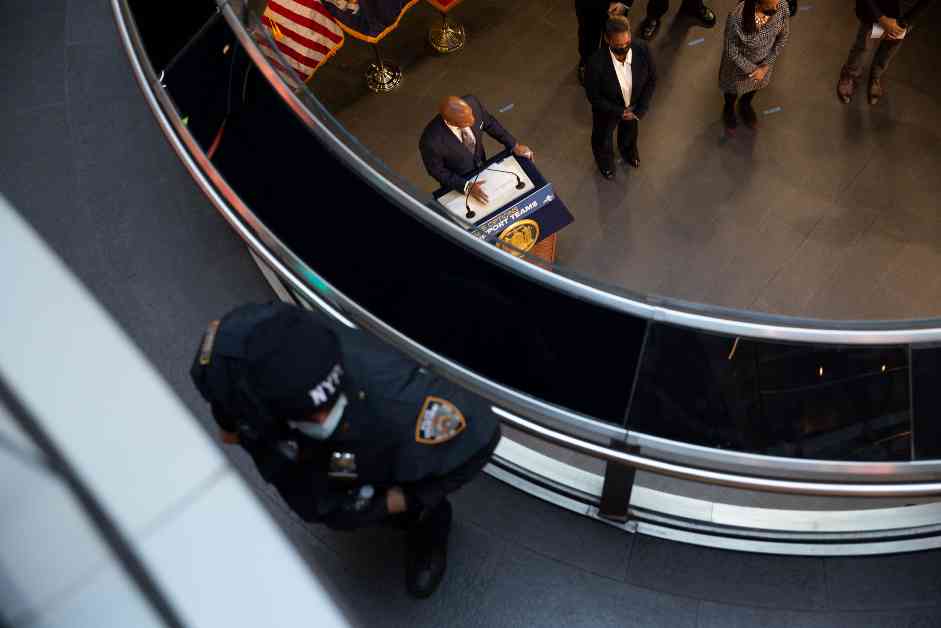City Hall is taking steps to integrate members of the NYPD into various city agencies despite ongoing federal investigations into the police commissioner and other top officials in Mayor Eric Adams’ administration. Deputy Inspector Timothy Wilson has been appointed as the “Chief of Enforcement” at the Department of Parks and Recreation, overseeing 250 Parks Enforcement Patrol officers as part of a broader initiative to place NYPD officials in local government agencies.
Wilson’s responsibilities include addressing illegal vending, permit enforcement, recruitment efforts, building out the agency’s drone unit, and enhancing collaboration with the NYPD to support PEP officers. This initiative aims to embed an NYPD member in each agency with an enforcement unit to improve interagency coordination and enforcement efforts.
Multiple city agencies have enforcement units, such as the Department of Homeless Services, Environmental Protection, and Health and Mental Hygiene, all of which will receive training at the Police Academy facility in Queens under another initiative announced by Mayor Adams in May. These developments come amidst an ongoing federal corruption probe involving the NYPD, with Commissioner Edward Caban and other officials under scrutiny.
In addition to these changes, Mayor Adams has appointed several individuals with law enforcement backgrounds to key roles in his administration, including Louis Molina and Matthew Fraser. The deployment of high-ranking NYPD officials into civilian city agencies represents a significant shift in city management under Adams, a former police captain himself.
The expansion of the NYPD’s influence into various city agencies has sparked concerns among union leaders and other stakeholders. Joe Puleo, president of District Council 37 Local 983, representing park patrol officers, expressed outrage at the NYPD’s increased involvement in parks enforcement. He argued that the NYPD’s enforcement culture, including practices like stop and frisk, may not align with the original mission of park patrol officers.
Puleo highlighted the absorption of various enforcement agencies by the NYPD over the years, expressing concerns about bureaucratic inefficiencies and the potential dilution of public service priorities. He is scheduled to meet with the NYPD to address these issues and ensure that the new initiative complies with the union’s collective bargaining agreement.
Meanwhile, concerns about crime in city parks have led to increased collaboration between PEP officers and the NYPD. While major crimes in city parks remain rare, the presence of law enforcement officials has raised questions about the balance between public safety and civil liberties. The recent settlement of a lawsuit involving an NYPD officer and Deputy Inspector Wilson underscores some of the challenges associated with enforcing policing practices in civilian agencies.
Elizabeth Glazer, former head of the Mayor’s Office of Criminal Justice, raised concerns about the growing influence of the NYPD in various city agencies. She emphasized the importance of exploring alternative, non-policing approaches to public safety issues, especially as the Police Department grapples with internal governance challenges.
Overall, the integration of NYPD officials into civilian agencies reflects a broader trend in city governance under Mayor Adams, prompting discussions about the appropriate role of law enforcement in public service delivery. As these changes unfold, stakeholders will need to navigate complex issues related to accountability, transparency, and the preservation of community trust in law enforcement.
